9 Best Herbal Teas For Gastritis
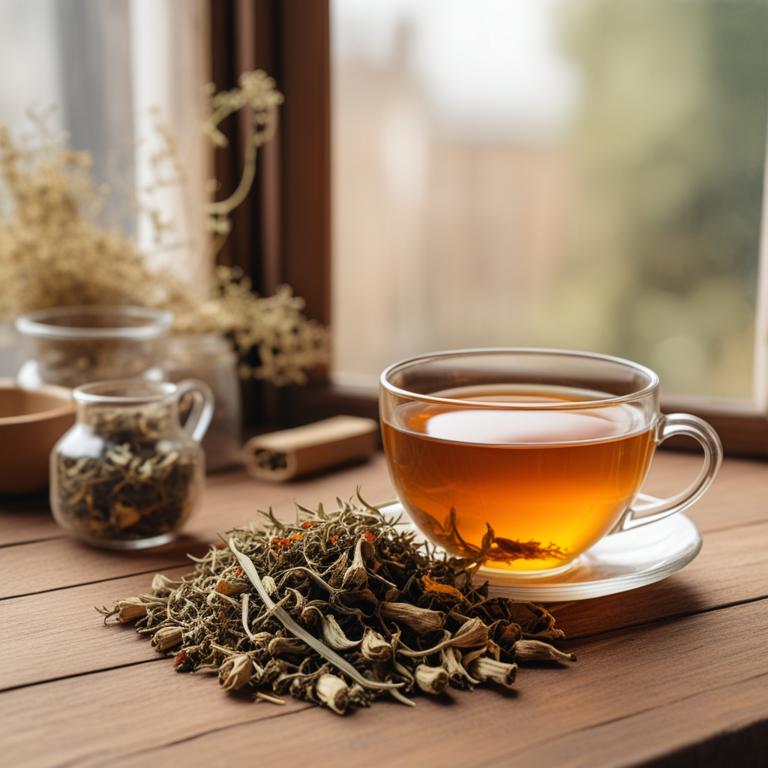
Herbal teas for Gastritis are a natural and effective remedy used to soothe and heal the stomach lining, reducing inflammation and alleviating symptoms associated with gastritis.
This type of tea is made from herbs and plants that have anti-inflammatory and antioxidant properties, which help to calm the digestive system and promote healing.
Examples of herbal teas used to treat gastritis include peppermint tea, which helps to relax the muscles in the digestive tract and reduce nausea; ginger tea, which has anti-inflammatory properties that reduce inflammation and soothe the stomach; chamomile tea, which calms the mind and body, reducing stress and anxiety that can exacerbate gastritis symptoms; licorice root tea, which has anti-inflammatory properties and soothes the stomach lining; and dandelion tea, which helps to stimulate digestion and promote the healing of the stomach lining.
By incorporating these herbal teas into one's diet, individuals can experience relief from gastritis symptoms and promote overall digestive health.
Related Study
According to the study, teas for gastritis, specifically green tea consumption, may effectively improve diarrhea and reduce hospital stay in children suffering from viral gastroenteritis.
Below there's a list of the 9 best herbal teas for gastritis.
Table of Contents
Also, you may be interested in...
Today Free Bonus!
The Ultimate Herb Drying Checklist
(For Long-Lasting Powerful Medicinal Effect)
How to easily dry herbs that don't mold and that keep their strong medicinal power for more than 1 year.
1. Zingiber officinale teas

Zingiber officinale teas, derived from the ginger plant, have been traditionally used to treat gastritis, a condition characterized by inflammation and irritation of the stomach lining.
The anti-inflammatory properties of Zingiber officinale teas, particularly the presence of gingerols and shogaols, help to reduce inflammation and alleviate symptoms of gastritis.
The bioactive constituents of Zingiber officinale teas, including gingerol, shogaol, and zingerone, have been shown to exhibit antioxidant and anti-inflammatory activities, contributing to their therapeutic effects in treating gastritis.
The benefits of using Zingiber officinale teas to treat gastritis include reduced inflammation, alleviated symptoms, and improved overall digestive health.
Related Study
According to "BioFactors (Oxford, England)", Zingiber officinale teas for gastritis may be beneficial due to the anti-inflammatory and anti-oxidative functions of ginger, specifically the phenolic compounds called gingerols, which can inhibit various pro-inflammatory cytokines and pathways involved in inflammation.
Recipe:
- Boil 1 cup of water in a kettle or pot.
- Measure 1 teaspoon of dried Zingiber officinale root.
- Add the measured root to the boiling water.
- Reduce heat to a simmer for 5-7 minutes.
- Strain the tea and drink 1/2 cup, 2-3 times a day.
Zingiber officinale teas can be beneficial in treating gastritis due to its anti-inflammatory properties, but it may cause side effects such as stomach upset, nausea, and diarrhea in some individuals.
To use Zingiber officinale teas safely, it is recommended to start with a low dose and gradually increase the amount, avoid consuming it on an empty stomach, and be cautious when combining it with other medications or herbal preparations that may interact with it.
Zingiber Officinale Tea on Amazon
FGO Organic Ginger Tea, 100 Count, Eco-Conscious Tea Bags, Caffeine Free, Packaging May Vary (Pack of 1)
Disclaimer: We earn a commission if you click this link and make a purchase at no additional cost to you.
2. Glycyrrhiza glabra teas

Glycyrrhiza glabra teas, derived from the root of the licorice plant, have been traditionally used to treat gastritis, a condition characterized by inflammation and irritation of the stomach lining.
The anti-inflammatory and antioxidant properties of these teas help to soothe the stomach and reduce inflammation, promoting healing and relief from symptoms.
The bioactive constituents of Glycyrrhiza glabra teas, including glycyrrhizin and flavonoids, play a crucial role in treating gastritis by inhibiting the production of stomach acid and reducing inflammation.
The benefits of using Glycyrrhiza glabra teas to treat gastritis include reduced symptoms, improved digestion, and a faster recovery rate, making them a popular natural remedy for this condition.
Related Study
According to the study, Glycyrrhiza glabra teas may have potential anti-ulcer activity and could be used to help prevent or cure gastritis caused by various factors, including inflammation and irritation in the mucosal lining.
Recipe:
- Gather 2 tablespoons of dried Glycyrrhiza glabra root and 1 cup of boiling water.
- Steep the dried root in the boiling water for 5-7 minutes.
- Strain the mixture and discard the root.
- Add honey to taste if desired, and mix well.
- Drink the tea 2-3 times a day for gastritis relief.
Glycyrrhiza glabra teas can provide relief from gastritis symptoms, but using them for an extended period may lead to side effects such as high blood pressure, edema, and potassium deficiencies due to the licorice root's ability to disrupt the body's electrolyte balance.
To minimize potential side effects, it's essential to consume Glycyrrhiza glabra teas in moderation, ideally for short periods, and to monitor your blood pressure and potassium levels closely.
Glycyrrhiza Glabra Tea on Amazon
Pukka Herbal Teas Licorice and Cinnamon - 20 Bags, 20 Count
Disclaimer: We earn a commission if you click this link and make a purchase at no additional cost to you.
3. Foeniculum vulgare teas
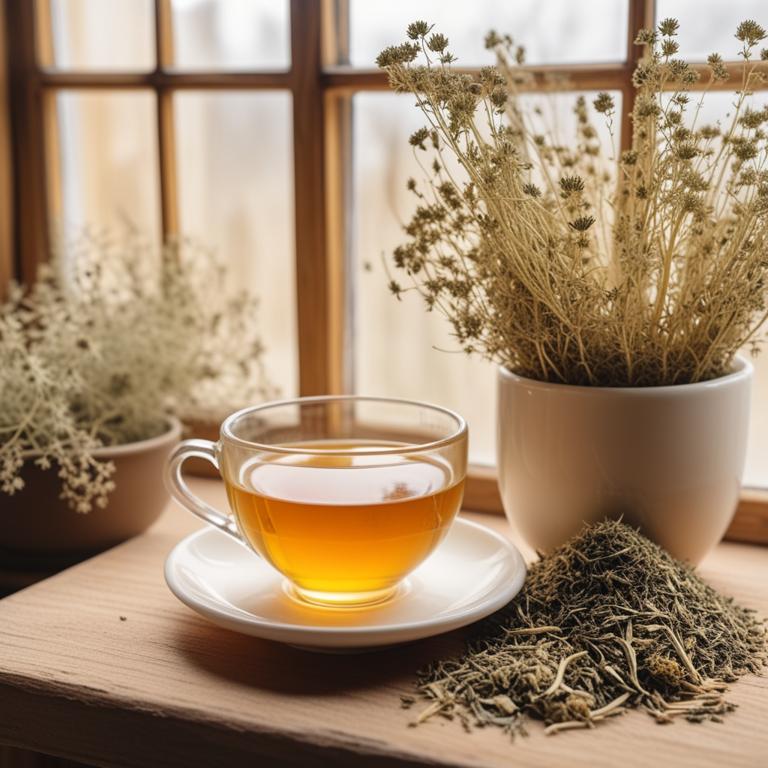
Foeniculum vulgare teas have been traditionally used to treat gastritis, an inflammation of the stomach lining, due to their soothing and anti-inflammatory properties.
The herbal preparation helps to treat gastritis by reducing inflammation, calming the digestive system, and relieving symptoms such as nausea and abdominal pain.
The bioactive constituents of Foeniculum vulgare, including flavonoids, phenolic acids, and volatile oils, particularly anethole, possess anti-inflammatory and antioxidant properties that contribute to its therapeutic effects.
By consuming Foeniculum vulgare teas, individuals can experience relief from gastritis symptoms and promote overall digestive well-being.
Recipe:
- Get 1 cup of fresh Foeniculum vulgare leaves and flowers. You can use 2-3 sprigs or 2-3 tablespoons of dried leaves.
- Measure 1 cup of water in a pot and bring it to a boil.
- Add the Foeniculum vulgare leaves and flowers to the boiling water. If using dried leaves, add 2-3 tablespoons.
- Reduce heat to low and let it simmer for 5-7 minutes. Strain the tea using a fine-mesh sieve or cheesecloth.
- Drink 1 cup of the tea 2-3 times a day, after meals, to help soothe gastritis symptoms.
Foeniculum vulgare teas can be used to alleviate gastritis symptoms; however, potential side effects may include allergic reactions, dizziness, and interactions with other medications, such as antacids or blood thinners, which could exacerbate the condition.
To safely use Foeniculum vulgare teas for gastritis treatment, it is essential to start with small doses, gradually increase the amount as needed, and avoid consuming it for extended periods, as prolonged use may lead to gastrointestinal issues like diarrhea or stomach upset.
Foeniculum Vulgare Tea on Amazon
Fennel Tea - 100% Organic and Alkaline - 15 Unbleached/Chemical-Free Fennel Tea Bags - Caffeine-Free, No GMO
Disclaimer: We earn a commission if you click this link and make a purchase at no additional cost to you.
4. Cinchona officinalis teas
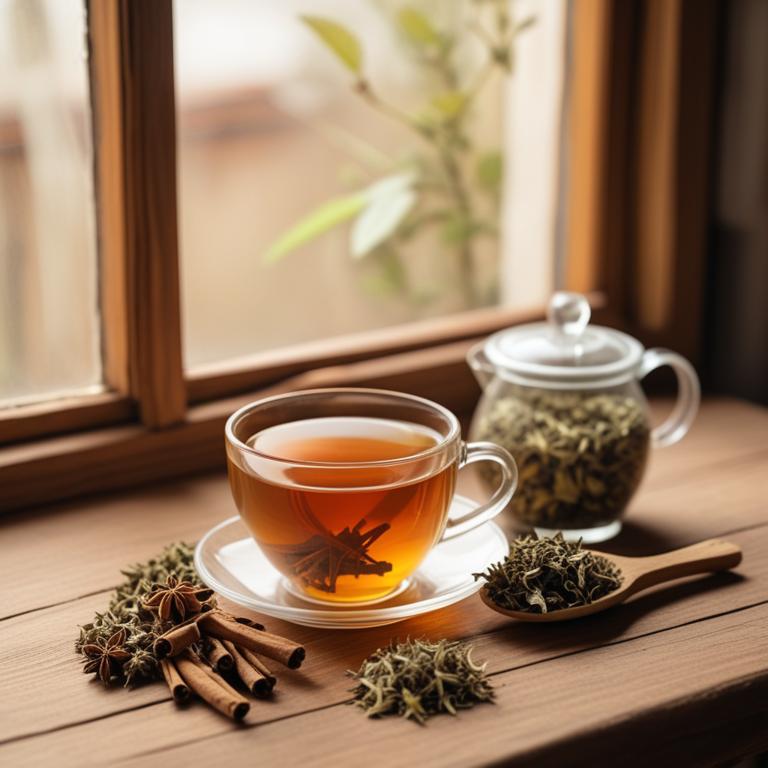
Cinchona officinalis teas have been traditionally used to treat gastritis, a condition characterized by inflammation and irritation of the stomach lining.
The anti-inflammatory properties of Cinchona officinalis teas, including the presence of alkaloids such as quinine, help to reduce inflammation and soothe the stomach lining.
These bioactive constituents also exhibit antimicrobial properties, which help to eliminate the underlying cause of gastritis, such as bacterial or viral infections.
The benefits of using Cinchona officinalis teas to treat gastritis include reduced inflammation, improved digestion, and a decrease in symptoms such as abdominal pain and nausea.
Recipe:
- Gather 2 cups of water and 2 teaspoons of dried Cinchona officinalis bark. Use a clean pot and scoop.
- Boil the water in the pot, then add the Cinchona bark. Turn down the heat to low.
- Let the mixture simmer for 5-7 minutes, then strain it into a cup using a fine-mesh sieve.
- Add 1 tablespoon of honey (optional) to the tea to sweeten it. Stir well.
- Drink the tea 2-3 times a day, as needed, to help alleviate gastritis symptoms.
Cinchona officinalis teas can be used to treat gastritis, but potential side effects may include nausea, stomach cramps, and dizziness, particularly when consumed in excess or without proper guidance.
To use Cinchona officinalis teas safely, it is essential to start with low doses, gradually increase the amount as needed, and avoid combining it with other stimulants or medications that can exacerbate stomach issues.
Cinchona Officinalis Tea on Amazon
Quina Roja(chinona) & Palo de Víbora Tea – 100% Natural, Vegan, Hecho en México | 25 Tea Bags
Disclaimer: We earn a commission if you click this link and make a purchase at no additional cost to you.
5. Curcuma longa teas
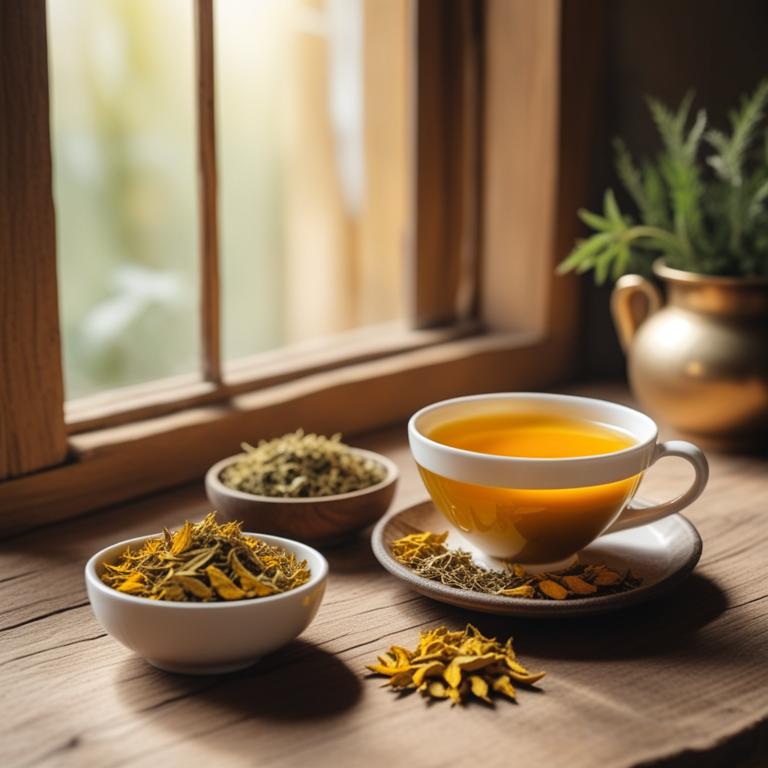
Curcuma longa teas have been traditionally used to treat gastritis due to their anti-inflammatory and antioxidant properties, which help to soothe and protect the mucous membranes in the stomach.
The bioactive constituents of Curcuma longa teas, including curcumin and polyphenols, have been shown to inhibit the production of pro-inflammatory enzymes and cytokines, thereby reducing inflammation and pain associated with gastritis.
By reducing inflammation and promoting healing, Curcuma longa teas can help to alleviate symptoms of gastritis, such as heartburn, nausea, and abdominal pain.
The benefits of using Curcuma longa teas to treat gastritis include reduced inflammation, improved digestion, and enhanced overall gut health, making it a popular natural remedy for this common ailment.
Related Study
According to "Open life sciences", Curcuma longa teas for gastritis contain curcumin as their main active substance, which has potential in preventing or treating digestive diseases due to its mechanisms of action.
Recipe:
- Gather 1 teaspoon of Curcuma longa powder and 1 cup of boiling water.
- Add 1 teaspoon of honey to the boiling water to make it sweet.
- Pour the boiling water into a cup, then add the Curcuma longa powder.
- Stir the mixture well for 10 seconds to mix the powder with the water.
- Drink the tea immediately, and repeat 2-3 times a day for gastritis relief.
Curcuma longa teas can be beneficial in treating gastritis, however, possible side effects may include digestive issues such as diarrhea, nausea, and stomach upset in some individuals due to its spicy and warming nature.
To minimize potential side effects, individuals should start with small doses, avoid taking it on an empty stomach, and drink plenty of water to help alleviate digestive discomfort.
Curcuma Longa Tea on Amazon
Pure Ceylon Turmeric Brew - 100% Organic Ceylon Turmeric Tea Bags (40 Sachets - pack of 2 – 20 COUNT PER BOX)
Disclaimer: We earn a commission if you click this link and make a purchase at no additional cost to you.
6. Mentha x piperita teas
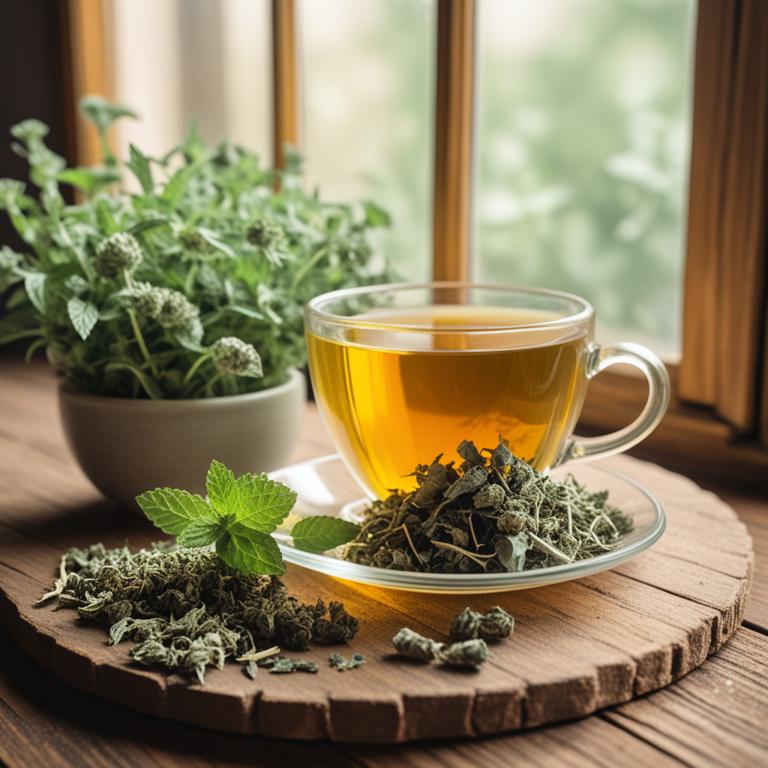
Mentha x piperita teas, also known as peppermint tea, have been widely used to treat gastritis, an inflammation of the stomach lining.
The anti-inflammatory and soothing properties of this herbal preparation help to calm the stomach and reduce inflammation, providing relief from gastritis symptoms.
The bioactive constituents of peppermint tea, including menthol and menthone, have been shown to have gastroprotective effects, reducing acid production and improving digestion.
Regular consumption of peppermint tea has been found to be beneficial in treating gastritis by reducing symptoms, promoting healing, and preventing further inflammation, making it a popular natural remedy for this common ailment.
Related Study
According to "Evidence-based complementary and alternative medicine : eCAM", Mentha x piperita teas for gastritis show gastroprotective activity due to its antioxidant properties and may be effective in reducing symptoms of gastritis.
Recipe:
- Gather 1 cup of water, 1 tablespoon of dried peppermint leaves, and a tea infuser or a heat-resistant cup.
- Heat the water in a pot or kettle until it boils.
- Add the dried peppermint leaves to the tea infuser or directly to the heat-resistant cup.
- Pour the boiling water over the peppermint leaves and let it steep for 5-7 minutes.
- Strain the tea and drink it while warm, 2-3 times a day, to help soothe gastritis symptoms.
Mentha x piperita teas can be used to treat gastritis, but it may cause side effects such as digestive issues, nausea, and allergic reactions in some individuals.
To use Mentha x piperita teas safely, it is recommended to consume them in moderation, avoid taking them with other medications, and be aware of any potential interactions with other herbal supplements.
7. Ginkgo biloba teas
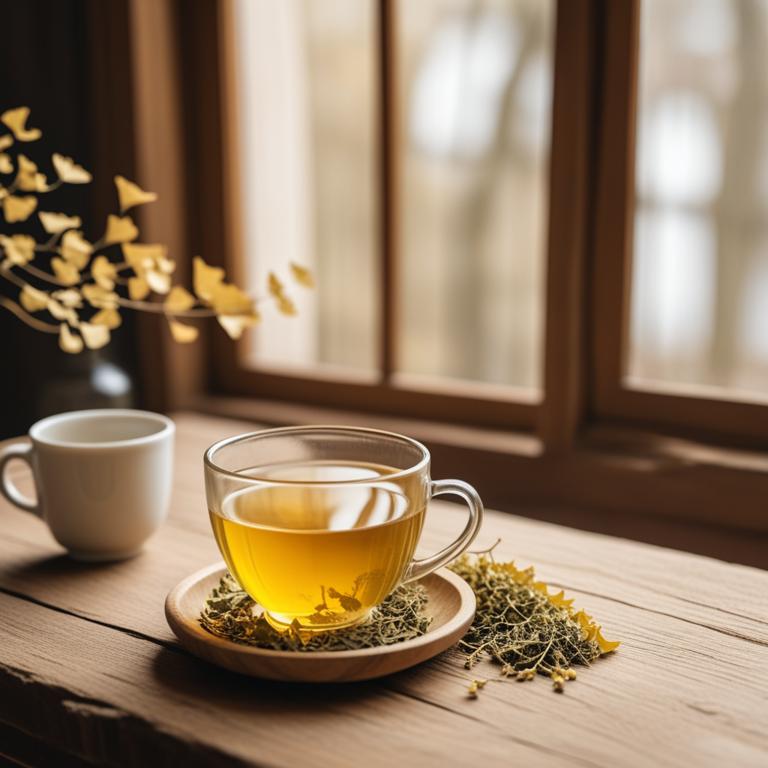
Ginkgo biloba teas have been traditionally used to treat gastritis due to their anti-inflammatory and antioxidant properties.
The bioactive constituents of Ginkgo biloba, including flavonoids and terpenoids, help to reduce inflammation and protect the stomach lining from damage.
By consuming Ginkgo biloba teas, individuals can experience relief from gastritis symptoms, such as stomach pain and nausea, as the herbal preparation helps to promote digestion and reduce inflammation.
The benefits of using Ginkgo biloba teas to treat gastritis include reduced symptoms, improved digestion, and a lower risk of complications associated with the condition.
Recipe:
- Gather 1 cup of water, 1 tablespoon of dried Ginkgo biloba leaves, and a tea infuser.
- Heat the water in a pot until it boils, then reduce heat to low.
- Add the Ginkgo biloba leaves to the tea infuser and place it in the pot.
- Steep the leaves for 5-7 minutes, then remove the infuser from the pot.
- Strain the tea and discard the leaves. Drink the tea warm or at room temperature.
Ginkgo biloba teas can be used to treat gastritis, but possible side effects include digestive issues such as nausea, stomach discomfort, and diarrhea, as well as allergic reactions like skin rashes or itching.
Precautions include taking Ginkgo biloba teas in moderation, avoiding consumption if you have bleeding disorders or are taking anticoagulant medications, and monitoring your body's response to the herbal preparation.
Ginkgo Biloba Tea on Amazon
Tai Chi Think Sharp Energizing Tea (Ginseng Ginkgo Biloba) 12 Bags
Disclaimer: We earn a commission if you click this link and make a purchase at no additional cost to you.
8. Aloe barbadensis teas
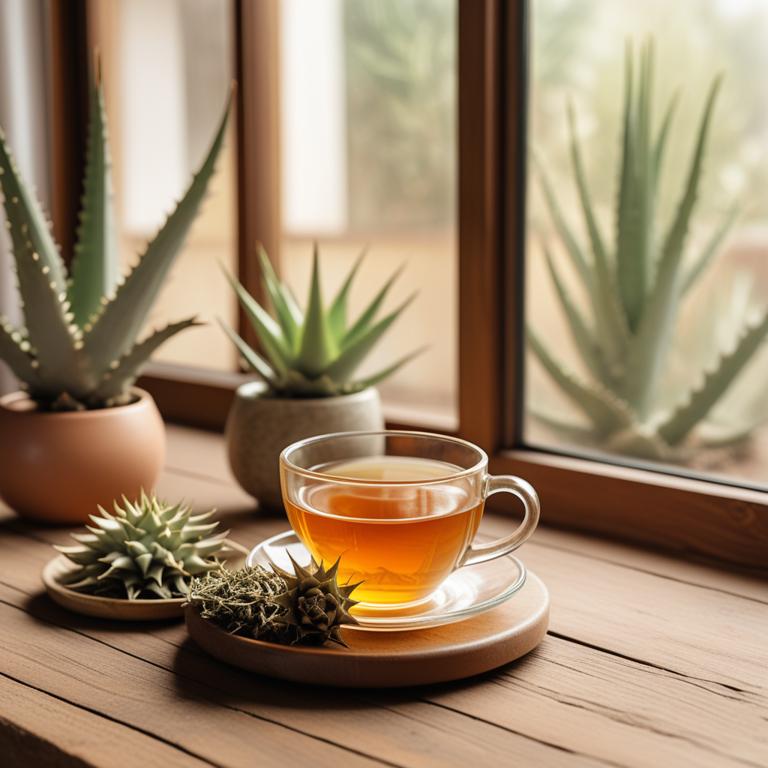
Aloe barbadensis teas have been traditionally used to treat gastritis, an inflammatory condition of the stomach lining.
The anti-inflammatory and soothing properties of this herbal preparation help to calm the stomach, reducing inflammation and discomfort associated with gastritis.
The bioactive constituents, such as aloin, aloe-emodin, and aloe-juice, possess anti-inflammatory and antioxidant properties that help to protect the stomach lining and promote healing.
Drinking Aloe barbadensis teas can help to alleviate symptoms of gastritis, including heartburn, bloating, and nausea, making it a popular natural remedy for this ailment.
Related Study
According to the study, Aloe barbadensis teas for gastritis have potential due to the presence of active substances such as flavonoids and saponins, which may help alleviate pain and discomfort in patients.
Recipe:
- Gather 1 cup of fresh Aloe barbadensis gel. Scoop it from the leaf. Discard the yellow sap.
- Wash the gel in a fine-mesh strainer under cold running water. Rinse well.
- Combine 1 cup of water and the Aloe gel in a saucepan. Heat on low until warm.
- Let the tea mixture steep for 10-15 minutes. Strain it into a cup using a fine-mesh strainer.
- Drink 1 cup of the Aloe tea 2-3 times a day. Store leftover tea in the fridge for up to 24 hours.
Aloe barbadensis teas can have potential side effects when used to treat gastritis, such as stomach cramps, diarrhea, and nausea, especially when consumed in large quantities or for extended periods.
To minimize potential side effects, it is recommended to start with a small dose, gradually increasing as needed, and to avoid consuming the tea on an empty stomach, as this may exacerbate digestive issues.
Aloe Barbadensis Tea on Amazon
The Republic of Tea Beautifying Botanicals® Clean Beauty Berry Aloe Herbal Tea Bags (36 count)
Disclaimer: We earn a commission if you click this link and make a purchase at no additional cost to you.
9. Lavandula angustifolia teas

Lavandula angustifolia teas have been traditionally used to treat gastritis due to their soothing and anti-inflammatory properties.
The herbal preparation helps to treat gastritis by reducing inflammation and calming the digestive system, thereby alleviating symptoms such as abdominal pain and nausea.
The bioactive constituents of Lavandula angustifolia teas, including linalool and linalyl acetate, have been found to possess anti-inflammatory and antioxidant properties that contribute to its therapeutic effects.
The benefits of using Lavandula angustifolia teas to treat gastritis include reduced inflammation, improved digestion, and relief from symptoms, making it a popular natural remedy for this common ailment.
Related Study
According to "Oxidative medicine and cellular longevity", Lavandula angustifolia teas may offer relief for gastritis due to its antispasmodic properties that can help in reducing smooth muscle contraction and cramping in the gastrointestinal system.
Recipe:
- Gather 1 cup of fresh Lavandula angustifolia leaves or 2 teaspoons of dried leaves.
- Heat 1 cup of water in a pot until it boils.
- Add the Lavandula angustifolia leaves to the boiling water and let it steep for 5-7 minutes.
- Strain the tea into a cup and discard the leaves.
- Drink 1 cup of the tea, 2-3 times a day, to help soothe gastritis symptoms.
Lavandula angustifolia teas can be used to treat gastritis, but its use may cause side effects such as stomach upset, nausea, and dizziness in some individuals, particularly when consumed in high quantities or for extended periods.
To minimize potential side effects, it is recommended to consume Lavandula angustifolia teas in moderation, ideally 1-2 cups per day, and to avoid taking it on an empty stomach or in combination with other medications that may interact with its active compounds.
Lavandula Angustifolia Tea on Amazon
Tiesta Tea - Lavender Chamomile Herbal Tea | Loose Leaf | Calming Blend with Chamomile and Lavender | Caffeine-Free Herbal | Great for Hot or Iced Brews | Resealable Bulk Pouch, 200 Cups | 8 Ounce
Disclaimer: We earn a commission if you click this link and make a purchase at no additional cost to you.